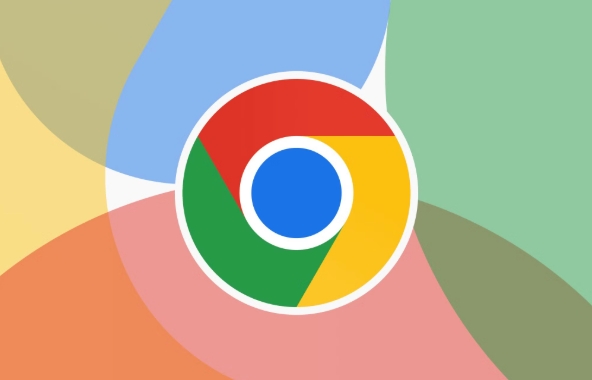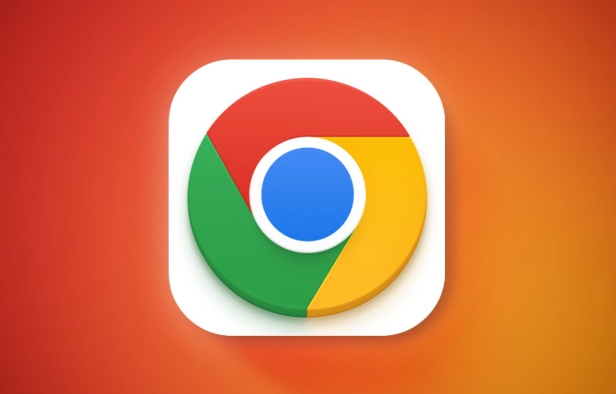Google Chrome not loading pages properly
Jul 25, 2025 am 01:19 AMTo solve the problem that Google Chrome cannot load web pages normally, first check the Internet connection to make sure it is not a network problem; secondly clear cache and cookies; then temporarily disable the extension; then update Chrome and reset settings; finally consider the DNS or hosts file issues. The specific steps are as follows: 1. Check the network connection and restart the router; 2. Clear the cookies and caches in the browsing data; 3. Close all extensions and troubleshoot the problem plug-in one by one; 4. Update the Chrome version and reset the browser settings; 5. Try to use public DNS or check the hosts file; If there are still problems, you can switch to traceless mode or create a new user configuration for further diagnosis.

If you're dealing with Google Chrome not loading pages properly, you're not alone. It can be frustrating when a page doesn't load fully, keeps spinning forever, or shows an error message. The good news is that many of these issues have simple fixes. Here's how to get Chrome back on track.

Check Your Internet Connection First
Before diving into browser-specific fixes, make sure the problem isn't with your internet connection. If other browsers are also having trouble loading pages, it's likely a network issue.

- Try loading a few different websites to see if the problem is consistent.
- Restart your router by unplugging it for about 30 seconds and plugging it back in.
- If you're on Wi-Fi, try switching to Ethernet (or vice versa) to rule out wireless problems.
Chrome might show messages like "ERR_CONNECTION_TIMED_OUT" or "This site can't be reached," which often point to connectivity issues rather than a problem with the browser itself.
Clear Cache and Cookies
Over time, Chrome stores data from websites you visit — this includes cache files and cookies. When they became outdated or corrupted, they can interfere with how pages load.

Here's how to clear them:
- Go to Settings > Privacy and security > Clear browser data
- Choose a time range (start with “Last hour” if you're unsure)
- Select the checkboxes for Cookies and other site data and Cached images and files
- Click Clear data
After doing this, reload the problematic website. In many cases, especially with sites you visit regularly, this will resolve loading issues.
Disable Extensions Temporarily
Browser extensions can sometimes conflict with how Chrome loads pages. Ads blockers, privacy tools, or even password managers might cause unexpected behavior.
To test if an extension is causing the issue:
- Open Chrome and go to chrome://extensions/
- Toggle off all extensions
- Reload the page that wasn't loading correctly
If it works now, re-enable the extensions one by one until the issue returns — that'll help you identify the culprit. You can then choose to remove or update the problematic extension.
Update Chrome and Reset Settings if Needed
Running an outdated version of Chrome can lead to compatibility issues. To check for updates:
- Click the three dots in the top-right corner > Help > About Google Chrome
- Chrome will automatically check for updates and install them if available
If Chrome still isn't behaving normally, resetting it to default settings can help:
- Go to Settings > Reset settings > Restore settings to their original defaults
- Confirm by clicking Reset settings
This won't delete your bookmarks or saved passwords, but it will turn off extensions, clear temporary data, and reset settings like your homepage or search engine.
Consider DNS or Hosts File Issues
Sometimes, Chrome uses DNS settings that aren't working well. Switching to a public DNS service like Google DNS or Cloudflare DNS may help.
You can also check if there's something wrong with your hosts file — especially if only certain websites refuse to load. This is more advanced, though, and usually affects developers or users who manually tweak system settings.
If none of the above work, try using Chrome in Incognito mode or create a new user profile in Chrome to see if the issue persists. If it doesn't happen in a clean profile, there may be some corrupted settings tied to your main one.
But for most people, clearing cache, disabling extensions, and checking internet connectivity should handle the majority of page-loading problems.
Basically that's it.
The above is the detailed content of Google Chrome not loading pages properly. For more information, please follow other related articles on the PHP Chinese website!

Hot AI Tools

Undress AI Tool
Undress images for free

Undresser.AI Undress
AI-powered app for creating realistic nude photos

AI Clothes Remover
Online AI tool for removing clothes from photos.

Clothoff.io
AI clothes remover

Video Face Swap
Swap faces in any video effortlessly with our completely free AI face swap tool!

Hot Article

Hot Tools

Notepad++7.3.1
Easy-to-use and free code editor

SublimeText3 Chinese version
Chinese version, very easy to use

Zend Studio 13.0.1
Powerful PHP integrated development environment

Dreamweaver CS6
Visual web development tools

SublimeText3 Mac version
God-level code editing software (SublimeText3)
 How to fix screen tearing when scrolling in Chrome
Jul 25, 2025 am 12:55 AM
How to fix screen tearing when scrolling in Chrome
Jul 25, 2025 am 12:55 AM
The screen tear occurs when the Chrome browser scrolls, which is usually caused by the out-of-synchronization of rendering and refresh. The solutions are as follows: 1. Ensure that hardware acceleration is enabled, you can manually check the settings and restart the browser; 2. Forcefully enable Compositor and related options to optimize rendering; 3. Check the display refresh rate, use single-screen testing, and enable VSync or adaptive synchronization technology on supported devices; 4. Update the graphics card driver or replace the display interface such as using the DP interface. It is recommended to start the troubleshooting with simple steps and gradually adjust to find the best configuration.
 How to fix Chrome profile sync getting stuck in setup
Jul 25, 2025 am 01:10 AM
How to fix Chrome profile sync getting stuck in setup
Jul 25, 2025 am 01:10 AM
The problem of Chrome sync stuck can be solved through the following steps: 1. Check the network connection and Google account status to ensure normal access; 2. Log out and log in to the Chrome account again; 3. Clear the synchronized data and restart the browser; 4. Reset Chrome settings; 5. Try the traceless mode or new user profile. Sequentially checking can effectively restore the synchronization function.
 How to fix Chrome opening new windows instead of tabs
Jul 26, 2025 am 01:29 AM
How to fix Chrome opening new windows instead of tabs
Jul 26, 2025 am 01:29 AM
1. Check whether the shortcut attribute has additional parameters and delete it; 2. Clear cache and switch startup settings, or create new user information; 3. Extend the impact and disable the problem plug-in through traceless mode. Chrome pops up new windows instead of tabs usually due to exceptions in shortcut parameters, cache configuration conflicts, or third-party extension interference. Check and adjust the corresponding settings in turn to resolve.
 How to fix Chrome when it's not printing correctly
Jul 26, 2025 am 02:46 AM
How to fix Chrome when it's not printing correctly
Jul 26, 2025 am 02:46 AM
Chrome printing exceptions can be solved in the following ways: 1. Check the printer selection, paper size, orientation, zooming and background graphics settings in the print preview; 2. Try stealth mode to eliminate extended interference and clear cache; 3. Update or reinstall the printer driver, replace the general driver or use the "Print as PDF" method; 4. Finally, you can reset the Chrome settings to restore the default. Most problems can be solved through the first few steps. If they still fail, you can export PDF to print.
 Google Chrome password manager is not saving passwords
Aug 02, 2025 pm 01:47 PM
Google Chrome password manager is not saving passwords
Aug 02, 2025 pm 01:47 PM
EnsureChrome’s“Offertosavepasswords”isenabledinSettings>Autofillandpasswords>PasswordManager.2.SignintoyourGoogleaccountandturnonSyncwithPasswordsincludedunderSyncandGoogleservices.3.Disableconflictingextensionslikethird-partypasswordmanagersor
 How to use Chrome's built-in ad blocker on abusive sites
Jul 27, 2025 am 12:31 AM
How to use Chrome's built-in ad blocker on abusive sites
Jul 27, 2025 am 12:31 AM
Google Chrome doesn't have a built-in traditional ad blocker, but it provides features to block intrusive and abusive ads. ① Pop-up windows and redirects can be blocked through content settings and BetterAdsStandards standards; ② Enable safe browsing to warn or block access to dangerous websites; ③ Clear site data and block third-party cookies to reduce tracking; ④ Chrome's native tools cannot completely block banner ads and video ads. If you need stronger functions, you need to install an extension.
 How to inspect websockets in Chrome's network panel
Jul 22, 2025 am 12:49 AM
How to inspect websockets in Chrome's network panel
Jul 22, 2025 am 12:49 AM
To view WebSocket communication, first open the Chrome developer tool and switch to the Network panel; secondly click the WS tag or enter ws: filter request; then click the specific entry and view sending and receiving messages under the Messages tag; you can use Filter to filter keywords to distinguish Sent and Received data; if it is JSON data, it will be automatically formatted, and binary will be displayed as a byte stream; when troubleshooting problems, you can view the connection status and response code 101 in Headers, check whether the request header has authentication information, find error prompts in Messages, and check the reason for disconnection such as 1006 being closed abnormally; at the same time, confirm whether the front-end calls newW correctly
 Why is my Chrome profile corrupted and how to fix it
Jul 26, 2025 am 01:31 AM
Why is my Chrome profile corrupted and how to fix it
Jul 26, 2025 am 01:31 AM
Chrome profile corruption can be resolved by creating a new profile, repairing local profile folders, clearing caches, and disabling extensions. Chrome configuration files contain bookmarks, passwords, extensions and other data. Corruption is usually caused by crashes, update interrupts or extension conflicts, which are manifested as failure to load bookmarks, extension exceptions, or error prompts. Solutions include: 1. Create a new configuration file and migrate data; 2. Rename the local configuration folder to trigger reconstruction; 3. Clear cache and disable extensions one by one to troubleshoot problems. To prevent it from happening again, it is recommended to back up your bookmarks regularly and enable synchronization, while avoiding forcing the browser to close when starting or updating. If the problem persists, there may be system or hardware problems, but it is rare.






